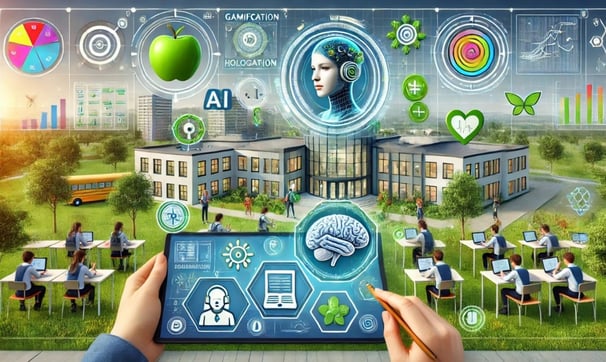Education Beyond the Pandemic: Top Trends Revolutionizing Learning in 2024
Discover how post-pandemic education is evolving with hybrid learning, mental health focus, and AI innovations. Learn strategies for modern classrooms.
EDUCATION


The pandemic reshaped education forever, accelerating the adoption of digital tools and redefining what classrooms look like. As we move forward, schools and institutions are blending the best of in-person and online learning while prioritizing student well-being. In this blog, we explore five transformative trends driving education forward in 2024 and beyond.
1. Hybrid Learning: The New Normal
Hybrid models combine face-to-face instruction with digital flexibility, offering benefits like:
Flexible Schedules: Students learn at their own pace, balancing screen time with hands-on activities.
Global Collaboration: Virtual exchanges connect classrooms worldwide (e.g., partnering with schools in Japan via Zoom).
Parent Involvement: Apps like Seesaw keep families updated on progress and assignments.
2. Prioritizing Mental Health & Social-Emotional Learning (SEL)
Schools are now addressing the emotional toll of the pandemic:
Mindfulness Programs: Tools like Calm Classroom reduce stress and improve focus.
SEL Curriculums: Lessons on empathy, resilience, and teamwork are now core subjects.
Counselor Access: Districts are hiring more mental health professionals to support students.
Stat Alert: 68% of educators say SEL has improved student behavior (CASEL Report, 2023).
3. AI-Powered Learning Analytics
Artificial Intelligence is helping educators make smarter decisions:
Predictive Analytics: Flagging at-risk students early using attendance and grade patterns.
Automated Grading: Tools like Gradescope save teachers hours on routine tasks.
Customized Feedback: AI tutors provide instant, personalized responses to student queries.
Example: Georgia State University reduced dropout rates by 22% using predictive AI.
4. Microschools & Learning Pods
Smaller, community-driven learning environments are gaining traction:
Personalized Attention: Pods with 10-15 students allow tailored instruction.
Parent-Led Initiatives: Families collaborate to hire tutors or share teaching responsibilities.
Flexible Spaces: Libraries, homes, and parks double as classrooms.
5. Gamification & Immersive Tech
Engagement is soaring with interactive tools:
VR Career Simulations: Students "try out" jobs like surgeon or engineer.
Escape Room Math: Games turn algebra into collaborative problem-solving adventures.
Blockchain Badges: Digital credentials reward skills like coding or leadership.
Tool Highlight: Minecraft Education Edition teaches sustainability through virtual world-building.
How Schools Can Adapt
Train teachers in digital pedagogy and trauma-informed practices.
Invest in affordable tech (e.g., Chromebooks, Wi-Fi hotspots).
Partner with EdTech startups for innovative solutions.
Conclusion
Education is no longer confined to four walls or rigid schedules. By embracing hybrid models, mental health support, and AI tools, we’re building inclusive, future-ready learning ecosystems. The goal? Empower every student to succeed in a rapidly changing world.
CTA: What trend excites you most? Share your vision for the future of education.
